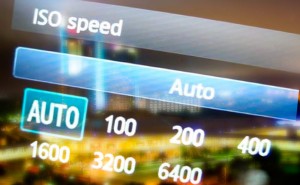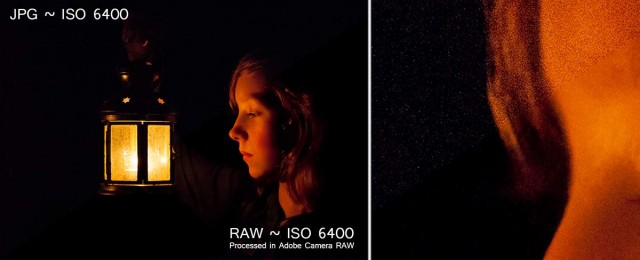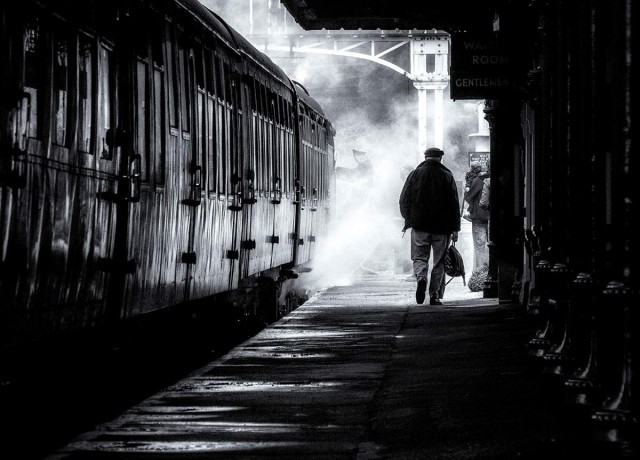Five ways to crack high ISO
 What do you do when flash isn’t an option, you can’t use a tripod and your shutter speeds are in danger of dropping too low? The answer is, of course, you increase your ISO. But as we all know, there’s a direct connection between ISO and noisy images and as a general rule it makes sense to keep the ISO at the lower end of the scale.
What do you do when flash isn’t an option, you can’t use a tripod and your shutter speeds are in danger of dropping too low? The answer is, of course, you increase your ISO. But as we all know, there’s a direct connection between ISO and noisy images and as a general rule it makes sense to keep the ISO at the lower end of the scale.
I’ve met a few photographers who have taken this advice a little too far and will doggedly stick to ISO 400 and below. I’ve also met photographers who have never, ever used ISO 800 and would faint at the thought of ISO 6400.
If that sounds like you, read on.
Try it for yourself
Don’t believe what you’ve been told by your mates, read on the internet or just assumed to be true. If you’ve not tried shooting at your camera’s highest ISO then make the effort to do just that and examine the results. Although the noise at top ISO setting is likely to be pretty ropey, taking the same shot one ISO stop less (half the ISO number) may well produce surprisingly good results.
Shoot in RAW
Whilst shooting in RAW and editing in Photoshop’s Adobe Camera RAW will ignore the in camera reduce noise feature, the RAW processor in Photoshop is superb at handling noise and keeping it under control. Take a look at the Detail tab and crank up the luminance noise reduction for best results… as seen here.
Nail the exposure
There’s a train of thought that says you can use a lower ISO if you deliberately underexpose the image and pull it back in post processing. That’s great idea at lower ISO’s but it’s a bad idea at high ISO’s. Altering the exposure in Photoshop will always drag out noise from any photo and lightening shadows makes the problem even worse. The higher the ISO used, the more noise you’ll see.
Bottom line: A perfectly exposed high ISO image will have less noise then a badly exposed, low ISO photo rescued in Photoshop
Go Mono
If all else fails and you have a shed load of noise in your photos then my secret tip is to dump the colour and switch to black and white. Back in the days of film, if you wanted high ISO you used mono film stock and despite all the leaps in technology we’ve made in the last 15 years mono images is still the best way to hide noise in plain sight.
Learn to love noise
It’s easy to get carried away with noise reduction to the point where you can loose sight of the bigger picture… quite literally.
Ask yourself the question. Would you prefer your photos to have noise or would you prefer them to be ruined buy either camera shake or over processing in Photoshop? Suddenly a bit of noise in your photos seems like a fair trade off.





Better to have one good shot than throw away fifty poor ones. Thanks, Gav.
I’ve read that there is far more picture information in the lighter areas of the image than in the shadows. Would it therefore be helpful to overexpose the shot (ensuring whites are not clipped) at high ISO and then darken down in photoshop or Lightroom?
Thanks for the tip … I’ve generally tried to keep to ISO 800 or below so will try out higher ISOs to see what I can achieve.
Even if that would work, if you need to go to a really high iso i guess it’s better to drop the ISO and nail the exposure, with a lower iso and noise, rather than trying to even overexpose it.
Actually, shooting at high ISO and then reducing the exposure can help with noise. Noise is created when there is a lack of light, not because of amplifying the sensor. You do lose some dynamic range though.
Nice info Gavin been following your tweets and YouTube posts also Eric too.
The B&W tip really works well. I have tested my D7000 maxed out, in colour it looks horrific, colour blotches all over the place, but in mono it suddenly looks great. While I haven’t found a real work use for this it’s nice to know I can stick it on Hi 2 (25600 ISO) and still have something that will not only be visible but look good too.
Hi Gavin,
you are so right! And I’m glad that a professional confirms my own attitude.
In Germany we say “make a virtue out of necessity”:-D Don’t know wether know this is the right translation 😉
Unfortunately I can only afford a 7D, which is known not as good in terms of noise. So I started to accept what I cant change an use it positve.
I think the “technician” among photographers are already become quite sensitive about what that noise of cameras are concerned. According to most opinions in forums about the 7D you can`t biy it because it have more noise than a iPhone 😀
On weekend I have exactly the usual conditions for producing noisy pics at a small rockclub … I only was allowed to flash at the main act. I only have taken some “save” pics with flash and I think the better pics are the ones without 😉
https://dl.dropbox.com/u/25039491/DIME.jpg
I think that the noise is what makes it cool * g *
Thanks for your inspiration Gavin
Christian
I had my Canon 50D wound up to H2 (12,500) to capture some projections onto Nottingham Castle when the show ended with a small firework display. Captured the resulting image at 1/400th at f4.5 hand held, a different take on the usual firework shots http://www.flickr.com/photos/24120976@N03/8465432715/in/photostream I’d like to claim it was all planned but sometimes you get lucky. The noise wasn’t a problem with this type of shot.
Excellent article Gavin, I use high ISO’s with my winter sport, to get my shutter speed to 1/1000 I sometimes shoot at 6400 with my D3s and I’m amazed at how little I have to do with noise reduction.
Great article Gav! Thanks. Couldn’t agree more.
Well, I do hate to shoot with my Canon 450D at the highest ISO (which is 1600) never mind what. I tried on many occasions with correct exposure, shooting in RAW and doing some post processing later on, but still those photos are not my cup of tea 😉
However, I believe that if there is a shot to grab and the only way to get it is to increase ISO, just do it, because you can always delete it later on 😀
great information Mr.Gavin ,I am a budding photographer,I am using nikon d3200,its heighest iso is 6400,I have never taken a photo with high iso,
now I will not be scared of noise.with your tips,I wil try to do some best work in post production.
Thanks a lot.
waiting for your new tips!
Exactly what I tell my students.
The one thing about images taken at higher ISO’s is that we view and process them on the most unforgiving medium which is the computer monitor. Zoom in at 100% and every single pixel is highlighted for all to see.
Print out the photos and things seem to get better. Some noise seems to get lost in the printing process. Maybe this because the printer cannot accurately produce the ink as finely as the monitor can show each pixel.
I have had good results from my Nikon D70 at Iso 800 and 1600 and sometimes deliberately take a photo of my 17 month old son at Iso 6400 on my Nikon D7000 as I quite like the effect.
I tend to use a bit of noise reduction in camera raw and maybe a tad in photoshop’s noise reduction filter but nothing excessive.
Some good info in this article and nailing the exposure is definitely the golden nugget.
Many thanks!!
Great tip on dumping colour for black and white, I’m going to give it a try when I’m out with the camera next. I think it’s something I’ve been subconsciously aware of but until it’s written down….
Brilliant post with photo examples, thanks for this. One quick question…is there a way to achieve all this without using photoshop? What would be the best setting then apart low ISO ?
thankyou gavin x